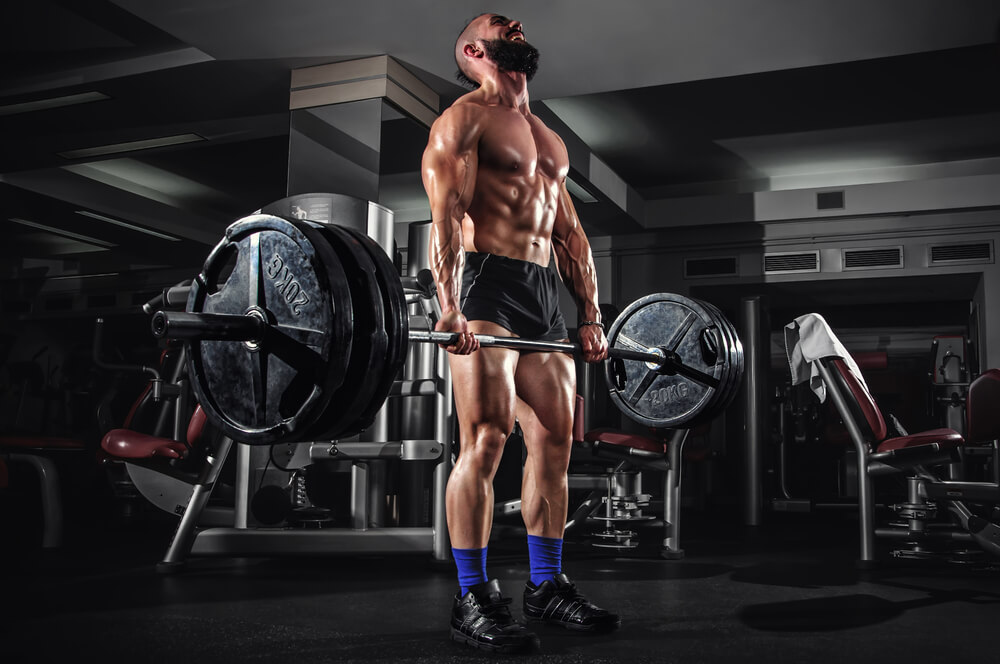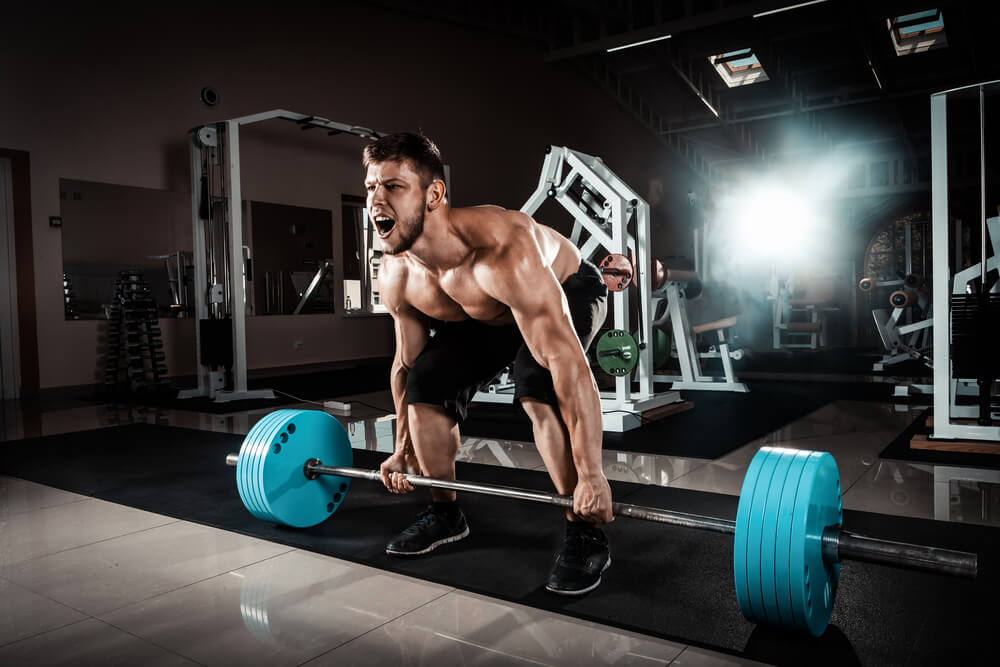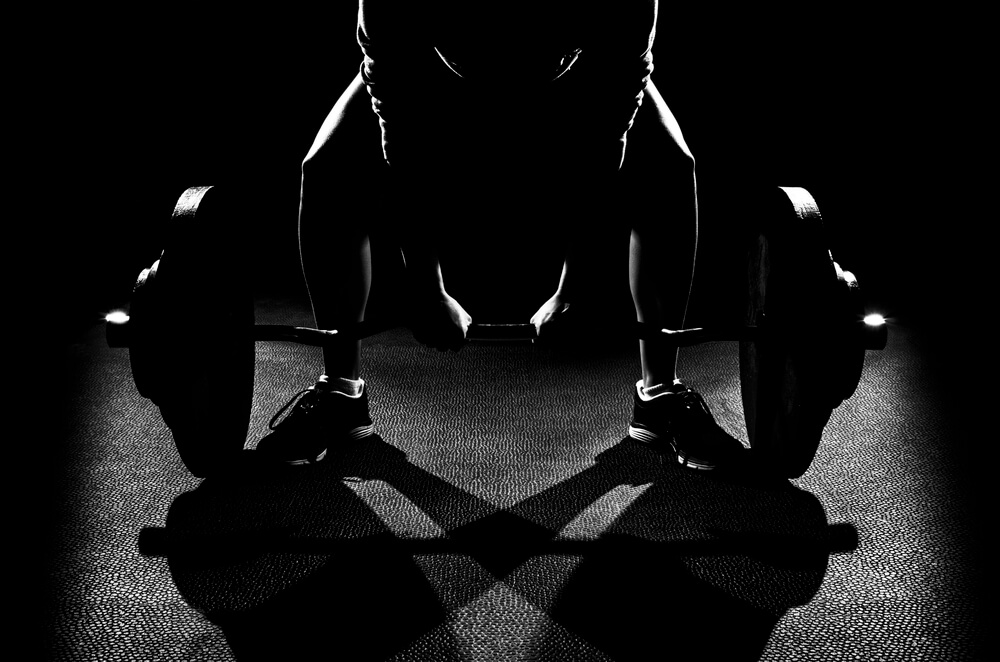
The best move can be the hardest to master. Here are the hacks you need for a better Deadlift Workout.
The deadlift workout is one of the top exercises to perform for a full body workout. But, there are a number of different methods to go about doing this exercise. You could focus mainly on the legs. Or, you could focus more on the upper body. The use of different deadlift workout types is actually more beneficial than just sticking to the conventional ones. Let’s take a look at the better deadlift types to focus on, and help you find how to deadlift and specific training programs.
What Is A Deadlift?
Some people may have not even heard of the deadlift exercise and how to deadlift properly.
Why?
The benefits of squats are often the primary focus for those who are being taught by personal trainers. For some reason, the assumption is that the deadlift is a more advanced exercise skill. But, this seems more like a lot of trainers do not want to take the time to teach a deadlift since it requires a little more details than just squatting with weight.
A deadlift is basically when you literally lift dead weight from the ground. But, the variations of the deadlift change how far you actually pull the bar. All deadlifts target your lumbar spinal erectors (upper and lower), trapezius (traps), rhomboids, deltoids, quadriceps (quads), hamstrings, gluteus maximus (glutes) and abs muscles. The only difference is how much each muscle group receives emphasis on contractions.
Every muscle is basically helping out to keep your body balanced and capable of completing the movement. For example, your arm muscles are not primarily used for the deadlift, but they of course are needed for grasping the bar and keeping a firm grip. When multiple joints and muscles are used they call the exercise a compound lift. Best Compound lifts are the most beneficial ones.
Why?
They basically target your entire body. They also have the ability to boost the release of free testosterone and growth hormones.
We will go over four deadlifts in depth. They are the conventional deadlifts, Romanian deadlifts, stiff-legged deadlifts and sumo deadlifts. We will also cover the single leg deadlift, but the other ones are the primary focus since they provide great benefits for everybody that performs them properly.
What Are Conventional Deadlifts?
The conventional deadlift is also referred to as being “regular” or “American.” This is the true deadlift that started it all by the bar actually being pulled from the ground every single rep performed. It’s the deadlift that everyone should begin with to get proper form and technique. That will carry over to other variants.
The primary muscles being worked are your back muscles and quads. Keep in mind that all deadlifts use the muscle groups discussed previously, but these being noted are receiving the biggest gains through the conventional deadlift. The reason your back and quads receive the most attention is because of how the exercise is done.
Doing the deadlift is easy. Begin by placing the barbell on the floor with your chosen load properly fixed onto the bar. It must be on the ground! Stand exactly in the center area of the bar with your feet shoulder width apart and toes pointed slightly outward under the bar.
Squat down and grasp the bar. You can use a mixed grip (hands facing opposite directions) or pronated grip (palms are down facing your body). Inhale slowly with your stomach to use your diaphragm. This is a vital core muscle for training and energy exertion. Your back should be in the neutral position, which is vertically straight and not rounded. Exhale as you drive your feet down and pull the bar past your knees tracing your body’s outline. Begin to push your hips forward to use more back muscle strength as you pass your knees. Lock your body out and lower the weight to the floor for the next rep.
It is essential for you to have the weight directly on the floor without it being suspended in the air with the help of a weight rack. Conventional deadlifts are often used in training programs focusing on the upper body as a whole or for back specific training. The most beneficial loads for this exercise are either heavy (1 to 5 reps) or moderate (6 to 10 reps).

What Are Romanian Deadlifts?
This exercise was actually given its name by American powerlifters that saw a Romanian competitor using it for his training program. The primary difference for this type of deadlift is the fact that you’re not pulling it straight from the ground. Instead, you will lower the bar close to being at this point. When done right, the Romanian deadlift forces different muscle groups to be contracted as primary movers.
Your hamstrings, glutes and lower lumbar spinal erectors get most of the focus with this type of deadlift.
Why?
The reason being because these muscles have to contract at a higher intensity to stop the movement of the weight against gravity, and weak muscles of the ones noted can prompt the exercise to become difficult. To understand the exercise better, it’s very important that you learn about how to do the reps.
Place the barbell on the floor or lower position of the squat rack with your chosen load already on the bar. The bar does not have to be on the floor. Stand exactly in the center area of the bar with your feet shoulder width apart and your toes pointed slightly outward under the bar.
Grasp the bar firmly with a pronated grip. Pull the weight up and stand as if in the lockout position for the conventional deadlift. Slowly lower the bar by maintaining a neutral spine posture and bending at the hips, following your body’s outline and stopping once your hamstrings have reached their maximum tension point. Usually max tension is just below your knees. Inhale slowly the whole way down. Exhale and pull the bar back to the upper position for the next rep.
You will feel a lot of muscle contractions going on in your hamstrings and glutes the most. The Romanian deadlift can be done on back specific training days or as a secondary big lift following squats on a legs training day. Moderate load settings (6 to 10 reps) are the best for this exercise. Doing it with heavy load settings usually does not work for most and is unnecessary.
Don’t bother!
What Are Stiff-Legged Deadlifts?
This exercise is quite similar to the Romanian deadlift. But, there are a few differences. You will be lowering the weight as far as possible to the floor to enable hamstring contractions, but your back is actually rounded during this type of deadlift. Remember with the Romanian deadlift you are maintaining a neutral spine posture. You basically have to round your back if you wish to do this move.
The primary muscles targeted are your hamstrings, glutes and lower lumbar spinal erectors. Proper posture is crucial since you are rounding your back and allowing the possibility for increased chances of lower back injuries. However, you do not use a lot of weight to load the bar down.
Use the following steps to do this type of deadlift. First, place the barbell on the floor or lower position of the squat rack with your chosen load already on the bar. The bar does not have to be on the floor. Stand right in the center area of the bar with your feet hip width apart and your toes pointed forward under the bar.
Grasp the bar firmly with a pronated grip. Pull the weight up and stand as if in the lockout position for the conventional deadlift. Inhale slowly as you begin to lower the bar all the way down to the floor allowing your back to round and prevent max tension on the hamstrings. Exhale slowly as you pull the bar back up tracing your body’s outline into the standing position. That’s one rep. Repeat the exercise for the amount of reps chosen.
Stiff-legged deadlifts are mainly done on leg training days. But, they can also be used to supplement as a secondary big lift to conventional deadlifts. The chosen load amount should be moderate (6 to 10 reps) or light (10 to 15 reps) since the back is being placed in the rounded position. Do not use heavy load settings unless instructed to and supervised by your trainer.

What Are Sumo Deadlifts?
Sumo deadlifts are quite a bit like the conventional deadlift. But, they are done with an exaggerated wider stance that resembles a sumo wrestler. That’s the only part resembling a sumo wrestler. It’s no excuse to mimic their diet! The reason for this sumo stance is to take the strain off the lower back muscles and place this upon your quads, which makes them the primary muscle being used.
Some even find this to be more beneficial compared to conventional deadlifts since you can balance yourself better. Others think it throws them off balance. Basically everyone has their own preference, but your upper body is not going to get as much attention with sumo deadlifts.
Another thing to note is from a competition standpoint. Sumo deadlifts are often done during powerlifting competitions.
Why?
It’s easier to lock the body out. The downfall is the increased difficulty pulling the weight off the floor. Conventional deadlifts differ in competition because they are easy on the pull from the floor, but the lockout is the hard part. Each one has its own benefits. You have to try them out and see which one works best for you when it comes to competition.
Be sure to do the sumo deadlift using proper form. Begin by placing the barbell on the floor with your chosen load fixed onto the bar. It must be on the ground! Stand exactly in the center area of the bar with your feet beyond shoulder width apart (about six inches wider) and toes pointed slightly outward under the bar.
Squat down and grasp the bar. You can use a mixed grip (hands facing opposite directions) or pronated grip (palms are down facing your body). Inhale slowly with your stomach to use your diaphragm. This is a vital core muscle for training and energy exertion. Your back should be in the neutral position, which is vertically straight and not rounded. Exhale as you drive your feet down and pull the bar past your knees tracing your body’s outline. Begin to push your hips forward to use more back muscle strength as you pass your knees. Lock your body out and lower the weight to the floor. That’s one rep.
Sumo deadlifts can be used for leg training or back training days. Heavy to moderate loads are more beneficial with this type of exercise.
What Is A Single Leg Deadlift?
Another deadlift that needs a little coverage is the single leg deadlift. Usually this move is done with dumbbells or just bodyweight. This type of deadlift targets your hamstrings, quads and glutes the most. But, this is also a core strengthening exercise because you are throwing your body off balance and forcing your muscles to help correct it. It is usually done on leg training days or core strengthening programs.
Stand on your right leg. Hold a dumbbell or kettle bell in your right hand or check out other kettlebell routines. Lower the dumbbell or kettle bell straight down as you lean your body forward until your torso is parallel to the ground at the same time. You should also kick your left leg straight back behind you. Return to the upright position. That’s one rep. It’s that easy! Repeat for the desired reps. Change sides to do an equal amount of reps on that side as well.

Conclusion
All of these exercises have their own benefits. They could all be used for better performance. Give them a try and see which ones are best suited for your needs. You may find you soon have a new go-to exercise.
By Brian Pankau, CPT
Latest posts by Terry M (see all)
- Garage Gyms - Aug 1, 2018
- Kettlebells – Why They Should Be Added To Your Routine. - Jul 24, 2018
- Weight Belts: What Are They Really For? - May 31, 2018









[…] the right deadlift workout, you can torch the major muscle groups in less time than ever before, all while maximizing your […]